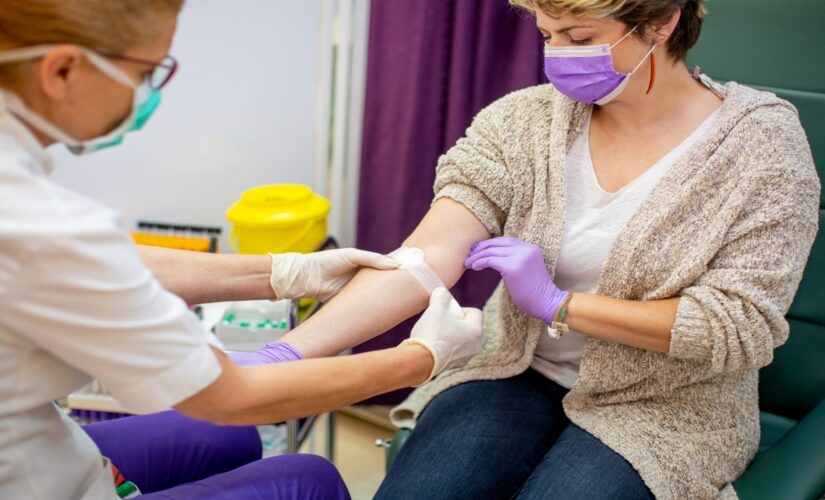The American Red Cross recently issued a public call to action due to a plummeting national inventory of blood donations amidst the COVID-19 pandemic.
“The Red Cross is now facing an emergency blood and platelet shortage. Blood donor turnout has reached the lowest levels of the year as many have delayed giving amid a return to the workplace and in-person learning, as well as a recent surge in COVID-19 cases across the country due to the delta variant,” Jodi Sheedy, senior director of Biomedical Communications at the Red Cross, told Fox News.
“This is particularly concerning as fall is usually a time when the blood supply rebounds after summer shortages,” Sheedy wrote. “We must collect 10,000 additional blood products each week over the next month for the blood supply to recover and meet hospital and patient needs – which is why we are reaching out to the public for help today.”
BLOOD CLOT SYMPTOMS TO LOOK OUT FOR
In a September 27 release, the Red Cross wrote that blood supply typically returns from summer lows after children go back to school, leaving their parents more time to donate – but that is reportedly not the case this year.
Surging hospital admissions and blood drive cancellations blamed on the pandemic have decreased blood supply to alarming levels, the organization said.
“Throughout the pandemic, we have experienced challenges collecting blood for patients from blood drive cancellations to surging hospital demand. Now with decreased blood donor turnout, our Red Cross blood supply has dropped to the lowest it has been at this time of year since 2015,” Chris Hrouda, president of Red Cross Biomedical Services, said in a statement. “We recognize that this is a trying time for our country as we balance the new demands of returning to former routines with the ongoing pandemic, but lifesaving blood donations remains essential for hospitals patients in need of emergency and medical care that can’t wait. The Red Cross is working around the clock to meet the blood needs of hospitals and patients – but we can’t do it alone.”
The blood types that hospitals need the most, types O positive and O negative, are in very short supply, the group told Fox News. Type O positive is the most common blood type and patients with type O negative blood are known as universal donors, since anybody can receive the transfusion from that blood type.
There is also an emergency need for platelets: the clotting portion of blood which must be transfused within five days of donation.
And, even as the need is dire, donor turnout has reached the lowest levels of the year – decreasing by about 10% since August, according to the Red Cross.
Blood product distributions to hospitals have remained strong and have significantly outpaced blood donations in recent weeks.
TEXAS MAN DONATES 120 GALLONS OF PLATELETS OVER 37 YEARS
In most states, individuals who are over 17 years of age, weigh at least 110 pounds and are in good health are eligible to donate.
Sometimes other factors, like international travel or certain medications, may impact a donor’s opportunity to give blood, and anyone looking to donate should check their eligibility at RedCrossBlood.org.
Patients who have had COVID-19 in the past can still donate, but Sheedy reiterates that the “Red Cross only collects blood from individuals who are healthy and feeling well at the time of donation. If an individual is experiencing any symptoms, the Red Cross asks that they postpone their donation until they are feeling better. The health and safety of everyone attending Red Cross blood drives across the country is a priority. In addition, other factors, such as international travel to select areas or certain medications being taken may impact donor eligibility.”
Blood can be safely donated every 56 days and Power Reds, which are two units of blood, can be donated every 112 days. Platelets can be donated every seven days, up to 24 times a year, the Red Cross said.
People generally donate one pint of blood, or around 450 to 500 millimeters of volume. The Red Cross said it collects about 12,500 generous blood donations every day.
After a donation, donors can safely resume normal daily activities. To minimize mild but rare reactions afterward, such as lightheadedness, donors rest for about 15 minutes while they hydrate. The body regenerates the loss in blood usually within one day.
CLICK HERE TO GET THE FOX NEWS APP
The Red Cross assured in its release that each blood drive and donation center follows “the highest standards of safety and infection control,” including face masks for donors and staff, regardless of vaccination status. Click here for more information.




